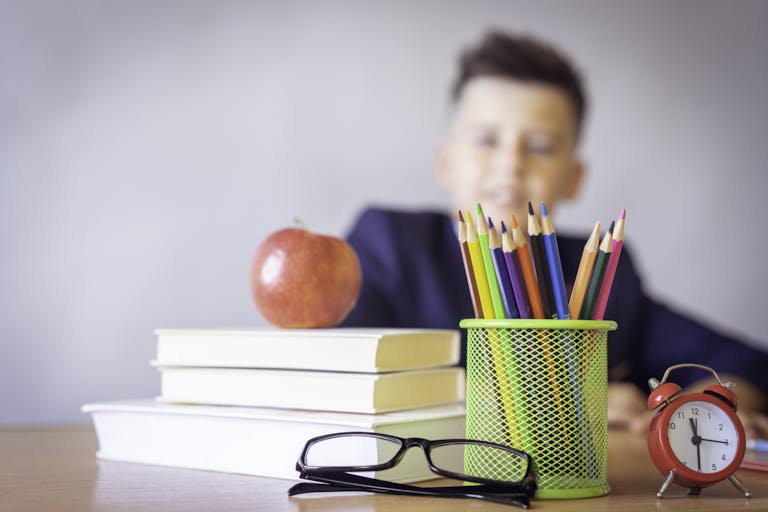Embracing the Mess: Sensory Bins, Overstimulation, and the Joy of Cleanup in Child Development
Embracing the Mess: Sensory Bins, Overstimulation, and the Joy of Cleanup in Child Development

Table of Contents
In the vibrant world of parenting, there’s a magical tool that sparks joy, creativity, and learning in children: the sensory bin. While these bins are fantastic for encouraging imaginative play and sensory exploration, they often come with a side order of mess and, at times, overstimulation. But fear not, fellow parents! We will delve into the wonderful world of sensory bins, explore strategies for dealing with overstimulation, and discover how involving your child in the cleanup process can be a valuable learning experience.

The Sensory Bin: A Messy Adventure
Sensory bins are a treasure trove of exploration for little ones. Filled with various textures, colors, and objects, they provide a sensory-rich environment that stimulates a child’s curiosity and creativity. From scooping and pouring to sorting and counting, the activities within a sensory bin contribute to the development of fine motor skills, hand-eye coordination, and cognitive abilities.
However, the mess that often accompanies sensory play can be overwhelming for parents. Rice scattered across the floor, water spilled on the table, or colored pasta hiding in unexpected corners – it’s all part of the sensory bin experience. Embracing the mess is the first step in creating an environment where your child can fully engage with their senses.
Sensory bins are the unsung heroes of childhood development, offering a kaleidoscope of textures, colors, and imaginative possibilities. From rice to water beads, these bins have the power to captivate a child’s senses and foster crucial skills like fine motor control and cognitive development. However, the mess that accompanies this sensory exploration can leave moms feeling overwhelmed.
1. Embrace the Chaos: The first step to mastering the art of sensory bins is to embrace the chaos. Accept that spills, scattered items, and unexpected messes are all part of the sensory play experience. A laid-back attitude will not only keep your stress levels in check but also allow your child to fully immerse themselves in the sensory wonderland without fear of reprimand.
2. Choose the Right Space: Designate a sensory play area that is easy to clean and contains the mess. Consider using a large plastic mat or an old bedsheet to catch spills and make cleanup a breeze. This way, you can encourage uninhibited exploration while maintaining a level of control over the potential aftermath.

Strategies for Managing Child Overstimulation
While sensory bins are designed to engage and captivate a child’s senses, it’s essential to be mindful of overstimulation. Some children may become overwhelmed by the plethora of sensory stimuli, leading to frustration or meltdowns. Here are a few strategies to manage overstimulation during sensory play:
- Introduce One Element at a Time: Gradually introduce new elements to the sensory bin instead of overwhelming your child with a multitude of items all at once. This allows them to acclimate to each texture, color, or object at their own pace.
- Observe and Respond: Pay close attention to your child’s cues. If you notice signs of discomfort or frustration, take a break or simplify the sensory bin by removing certain elements. It’s crucial to be attuned to your child’s needs during playtime.
- Create a Calming Corner: Designate a calming corner in your play area where your child can retreat if they feel overstimulated. This could include soft cushions, a cozy blanket, or calming sensory tools to help them self-regulate.
- Establish a Routine: Consistency can provide a sense of security for children. Establish a routine for sensory play, and make sure it aligns with your child’s natural rhythms. Knowing what to expect can help reduce anxiety and overstimulation.

Overstimulation: A Balancing Act for Moms
As moms, we strive to provide our children with enriching experiences, but sometimes the sensory overload can be as challenging for us as it is for them. Here are some strategies to navigate and manage overstimulation during sensory play:
1. Set Realistic Expectations: Understand that not every sensory play session will go smoothly. There will be spills, loud laughter, and unexpected twists. By setting realistic expectations, you can approach sensory play with a more relaxed mindset, reducing your own stress levels.
2. Take Breaks: If you notice signs of overstimulation in yourself or your child, don’t hesitate to take a break. Stepping away from the sensory bin for a few minutes can help everyone reset and return with a refreshed perspective.
3. Engage in Parallel Play: Participate in sensory play alongside your child. Engaging in parallel play allows you to monitor their reactions and provide support when needed. It also strengthens your bond and creates a shared experience.
4. Create a Calm Down Corner for Moms: Just as children benefit from a designated calming corner, moms can also create a retreat space for themselves. A cozy nook with a cup of tea or a few moments of mindfulness can do wonders to alleviate stress.

Encouraging Child Participation in Cleanup
Now that we’ve explored the wonders of sensory play and strategies for managing overstimulation, let’s shift our focus to the aftermath – the cleanup. Engaging your child in the cleanup process not only teaches responsibility but also offers valuable learning opportunities.
1. Make Cleanup a Game: Turn cleanup into a playful game. Set a timer and challenge your child to beat the clock in picking up items or create a scavenger hunt where they match items to pictures for added excitement.
2. Provide Child-Sized Tools: Equip your child with age-appropriate cleaning tools. Child-sized brooms, dustpans, and containers make the cleanup process more manageable and empower your little one to take an active role.
3. Turn It into a Learning Opportunity: Use cleanup time as a chance to reinforce learning concepts. Sort items into categories, count as you clean, or discuss colors and shapes. This not only makes cleanup educational but also encourages a positive association with tidying up.
4. Celebrate Achievements: Acknowledge and celebrate your child’s efforts in cleaning up. Positive reinforcement, such as praise or a small reward, can motivate them to take pride in maintaining their play space.
Check out more clean-up and storage materials here.

Learning Through Cleanup
Beyond the immediate benefits of a tidy play area, involving your child in cleanup fosters various skills and values:
- Fine Motor Skills: Sorting, scooping, and picking up small objects during cleanup contribute to the development of fine motor skills. These activities enhance hand-eye coordination and strengthen the muscles needed for more intricate tasks.
- Responsibility: Taking care of one’s space instills a sense of responsibility in children. They learn that every action has consequences and that they play a vital role in maintaining a clean and organized environment.
- Problem-Solving: Cleanup often involves solving spatial problems – figuring out where each item belongs and how to organize them efficiently. This process encourages cognitive development and critical thinking.
- Teamwork: If you have multiple children, cleanup becomes an opportunity for teamwork. Collaborative efforts teach children the value of working together and the satisfaction of achieving a common goal.

Sensory bins are a delightful avenue for child development, offering a multitude of sensory experiences that contribute to learning and growth. Embracing the mess that comes with sensory play and implementing strategies to manage overstimulation creates a positive and enriching environment for your child.
Moreover, involving your child in the cleanup process transforms the aftermath of play into a valuable learning experience. As they engage in the routine of tidying up, children develop essential skills, values, and a sense of ownership over their play space. So, the next time you find yourself knee-deep in colored rice and scattered beans, remember that the journey of sensory play and cleanup is not just about the mess – it’s about the joy of learning, exploration, and shared moments with your little one.

Share Your Thoughts
Moms, your journey through sensory play, mess management, and the art of turning cleanup into a learning adventure is a collective experience we can all relate to. What are your go-to strategies for embracing the chaos of sensory bins? How do you navigate overstimulation for both you and your child? And, most importantly, share your creative tips for making cleanup a fun and educational activity. Your insights could be the inspiration another mom needs to turn her sensory playtime into a symphony of joy and learning. Let’s build a community of shared wisdom in the comments below!
-
Back to School Sensory Play: Easing the Transition for Kids
The first day of school is exciting—but for many kids, it’s also overwhelming.
From new routines to louder environments, the back-to-school season can stir up big feelings. Sensory play is a simple, calming way to help kids process change, release tension, and start the year with confidence. In this post, I’m sharing easy back-to-school sensory bin ideas and tips that fit right into your daily routine—so your child feels grounded, focused, and ready to learn. -
How to Start a Sensory Bin Business: Safety, Compliance, and Profit Tips for 2025
Starting a sensory bin business is exciting—but safety, legal compliance, and product quality are crucial. This step-by-step guide covers everything from creative planning to insurance, child safety regulations, and hygiene standards, helping you build a responsible, successful business that parents trust and kids love. Don’t just create—create with care.
-
101 Ultimate Sensory Bin Fillers (Grouped by Type)
Sensory bin fillers are the foundation of hands-on play, offering endless opportunities for creativity, learning, and calming experiences. This guide shares over 100 unique filler ideas for every age and season, helping parents, educators, and therapists create engaging, screen-free activities that support development and sensory exploration in fun, meaningful ways.
-
Celebrate Dad with a Father’s Day Sensory Bin: A Fun, Hands-On Gift Kids Can Create
Looking for a meaningful, screen-free way to celebrate Father’s Day with your little one? This Father’s Day Sensory Bin is the perfect activity that combines play, bonding, and a personalized gift kids can help create. Dive into ideas, tips, and step-by-step instructions to make Dad’s day extra special.
-
Birthday Sensory Bin Ideas for Toddlers and Kids
Celebrate birthdays in a hands-on, screen-free way with a festive birthday sensory bin! Perfect for parties, quiet time, or birthday gifts, this bin brings joy, play, and imagination together. Get step-by-step ideas, supply lists, and inspiration to create your own birthday bin—whether for your child or yourself!
-
7 Simple Steps to Organize Sensory Bin Supplies Without the Mess
Tired of sensory bin chaos? This post shares 7 simple steps to organize your sensory bin supplies without the mess. From smart storage ideas to easy rotation systems, you’ll learn how to create a clutter-free setup that keeps your kids engaged—and your sanity intact. Perfect for busy, overwhelmed moms!













Leave a Reply